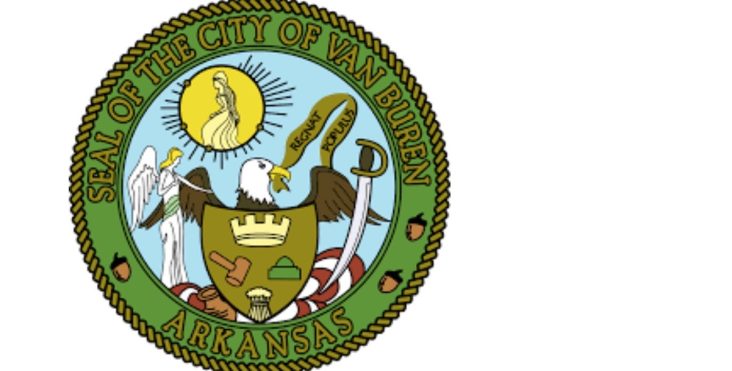Fewer funds to be available for 2024 Van Buren street and drainage work
by August 31, 2023 5:19 pm 615 views

A three-month gap in sales tax revenues is likely to cost Van Buren close to $1 million, but Mayor Joe Hurst said the lost revenue won’t impact capital improvement projects budgeted in 2023.
According to the Arkansas Department of Finance and Administration (DFA), there will be a three-month period – October through December – when the 1% county-wide sales tax typically collected in Crawford County will not be collected.
On May 12, 2015, Crawford County voters approved extension of a 1% sales and use tax and scheduled the tax to expire on Sept. 30, 2023, according to the DFA. On May 24, 2022, the tax was approved by the voters to be extended until May 30, 2031. However, there was an error in reporting that continuance to the state, and in July retailers were notified of a change in the amount of sales tax that should be charged for sales in the county
Crawford County Judge Chris Keith said he heard from a seller that they had been notified of the change and called the DFA on July 20 to inquire why. At that time, he was told Crawford County had not filed the correct report letting the state know that the sales tax had been continued.
“I asked the person I was dealing with if the DFA ever sent out anything when a county (or a city) had not filed the reports. He said the state does not send out notices,” Keith said.
On Aug. 1, the DFA notified Crawford County that all of the documentation required to be received by DFA under Arkansas law to continue collection of the tax on Oct. 1 had not been received, said Scott Hardin, DFA spokesman. By that time, Crawford County had rectified the issue and filed the correct paperwork, Keith said. But it was too late for the county to have a continual collection of the sales tax.
In accordance with Arkansas tax law, prior to an election a city or county may provide the DFA with proof of publication and the mayor or judge’s proclamation of election results at least 90 days prior to the effective date of the tax. Because the tax was set to end on Sept. 30 prior to the 2022 election, county officials had to notify the DFA by July 3 of the election results.
Keith said the law states that the county or municipality is to file the report to the state 10 days after the election is certified. He noted that the deadline for the 90 days prior to collection refers to instances when an election is held close to the time when the tax is to start being collected. Former Crawford County Judge Dennis Gillstrap said the election was certified last summer at the quorum court meeting following the election May 24, 2022.
On Aug. 17, the DFA notified Crawford County that the necessary documentation had been received and businesses would be notified to resume collection of the 1% sales and use tax on Jan. 1, 2024. But that still leaves three months with no collection of that sales tax. The revenue this sales tax generates is distributed to the county and the nine municipalities in the county based on population, with the county getting roughly 43% of the total collection and the nine municipalities in the county getting the remaining 57%, Keith said.
Last year, Van Buren’s portion of the collections from October through December were about $976,000, said Van Buren Mayor Joe Hurst.
“Sales tax revenues are up about 14% right now over last year, which is why I think we’re looking at about $1 million we won’t get,” Hurst said.
The good news, if there can be good news in this situation, is that taxes collected by retailers in October, November and December are distributed to the municipalities and counties in December, January and February.
“That means we really have only one month this year when we won’t get the revenues,” Hurst said.
With the months up until now showing higher than expected revenues, the city is hoping the one month in 2022 without the revenue from the sales tax won’t hurt the city’s budget too much. Of the funds that Van Buren receives from the sales tax, 25% goes to police and fire and 75% goes to capital improvements.
“When we are making our budget for next year, we will know we will have less the first of the year. It will mostly affect our capital improvements, probably some drainage and street projects,” Hurst said.
It won’t affect any of the capital improvements planned this year though, he said, noting that 2023 projects have already been budgeted with funds available.
